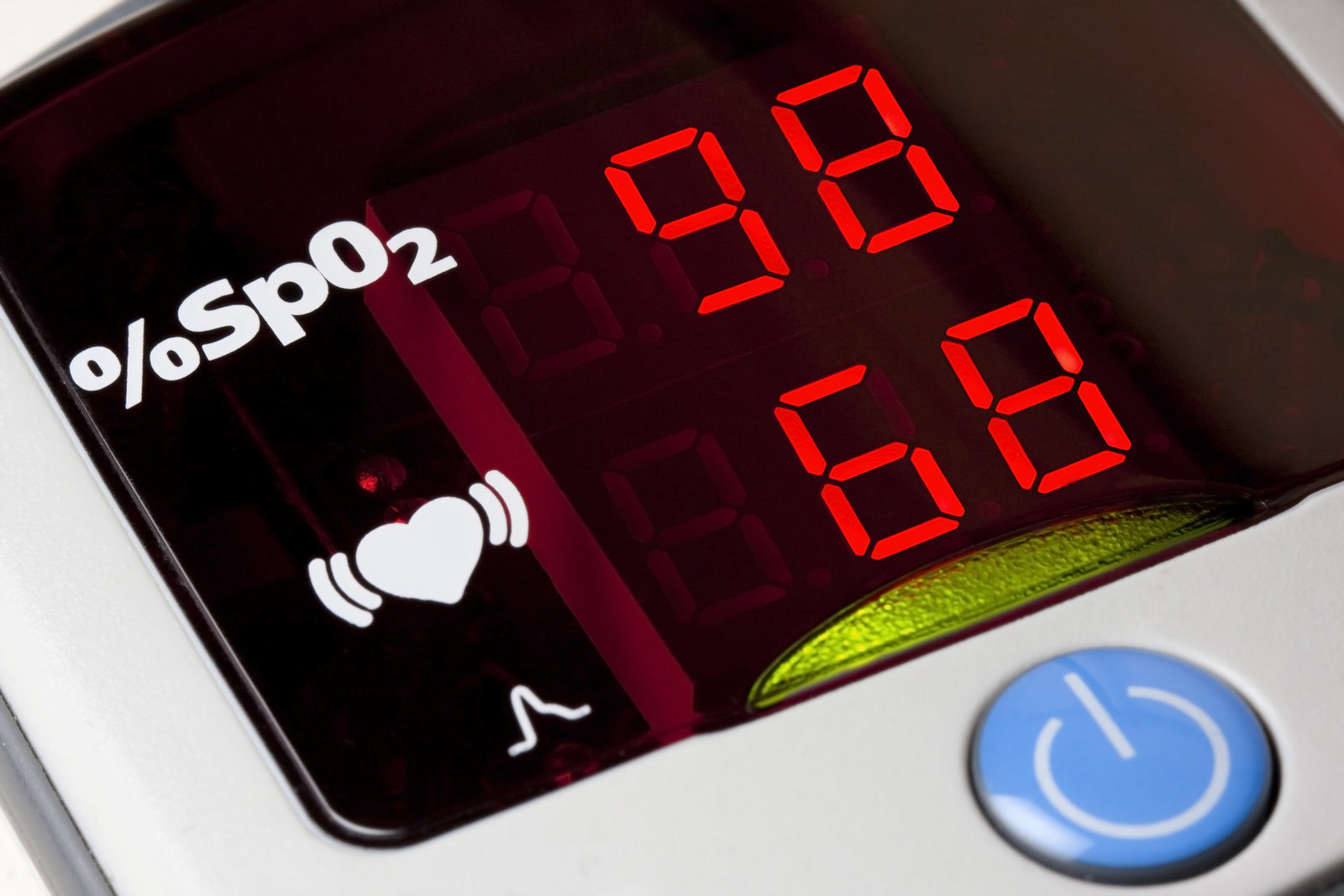Your Cart is Empty
Lauren Carlstrom, O+ Team Member |
The Blood Oxygen Saturation Bell Curve Guide
If you've read our article, Oxygen Saturation Levels & Effects of Carbon Dioxide, then you know what percentage range is considered a "normal, healthy" level of oxygen in the human body. What you may not (yet) know is that oxygen saturation, like some of your exams in school, is graded on a curve. Where you fall on the curve can make a big difference in how much supplemental oxygen you may need in order to maintain peak mental and physical performance. Read on to learn more about how to make the most out of every breath.
Blood Saturation & Oxygen Tension
Blood oxygen saturation (SpO2) is a way of measuring oxygen levels in your arteries as it relates to hemoglobin levels. (Hemoglobin is a red protein responsible for transporting oxygen in the blood of vertebrates). A healthy person will usually have a SpO2 of 94 to 99 percent - which means that this percentage of your hemoglobin is carrying oxygen molecules. This figure is calculated in part using the oxygen tension (aka partial pressure) of your arterial blood, which amounts to between 75 and 100 millimeters of mercury (mm Hg) at normal levels (Mayo Clinic Staff).
Don't worry - you don't have to do fancy calculations to understand how oxygen works in your body. What's most important to remember is that the relationship between your body's oxygen saturation and oxygen tension is not a straight line. On a graph, the interaction is displayed in the Blood Oxygen Saturation Bell Curve, also known as the Hemoglobin-Oxygen Dissociation Curve (Collins et al). Simply put, changes in oxygen levels have a negligible effect at the bottom and top of the saturation scale and a big effect in the areas in between.
What Does the SpO2 Bell Curve Mean For You?
Based on this bell curve, gaining or losing oxygen will have almost no impact on your SpO2 measurement if your body's oxygen level is already at a normal, healthy level. However, as your oxygen levels decrease, the effect on saturation begins increasing exponentially at around the 90 percent mark (Lipe). For healthy individuals, oxygen levels can drop to the 90 percent mark from conditions including vigorous exercise, long travel, higher altitude, pollution and consuming cigarettes and alcohol. This percentage mark is also the point where a person can develop hypoxia or hypoxemia, which are serious medical conditions that require immediate medical attention. From the 90 percent mark downward, every fewer point of mm HG significantly lowers your blood oxygen saturation and increases the risk of low energy, shortness of breath, rapid heart rate, mental confusion, sweating, skin color changes and other dangerous symptoms (Hypoxia and Hypoxemia).
(WARNING: Any person with any type of health or medical condition should consult their physician prior to use of Oxygen Plus (O+) products. O+ products are intended for recreational, intermittent use only, not to be used as medical nor life-saving products. See Legal for more information.)
Stay Ahead of the Curve with Oxygen Plus
Sometimes simply stopping and catching your breath is enough to revive your body's depleted oxygen levels back to normal, healthy levels. But for serious athletes, frequent travelers, partiers and people not accustomed to high elevations, regular air alone may not be enough, or might simply be too slow, to help bounce back to feeling status quo. That's when Oxygen Plus comes to the rescue. A portable canister of pure recreational oxygen from Oxygen Plus (O+) may be the help you may need to increase your oxygen tension and saturation levels - so you feel and perform more like you again. Supplemental oxygen can help restore your physical and mental performance to optimal levels. That's why breathing O+ oxygen at the first sign of depletion can keep you from sliding down the slipperly slope of the Blood Oxygen Saturation Bell Curve - helping to always keep you on top of your game.
O+O+O+O+
"Hypoxia and Hypoxemia." WebMD. Web. 4 May 2017.
Collins J-A, Rudenski A, Gibson J, Howard L, O'Driscoll R, "Relating Oxygen Partial Pressure, Saturation and Content: the Haemoglobin-Oxygen Dissociation Curve," Breathe (Sheff), 2015 Sep;11(3):194-201.
Lipe S. "Oxygen Talk Given at the SSA Convention, Reno, NV." 4 Mar. 1995. Web. 4 May 2017.
Mayo Clinic Staff. "Hypoxemia (low blood oxygen)." Mayo Clinic. Web. 4 May 2017.
